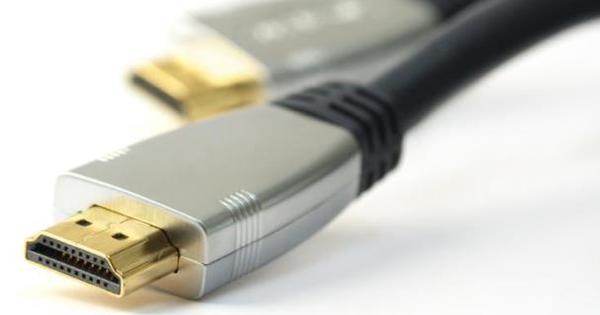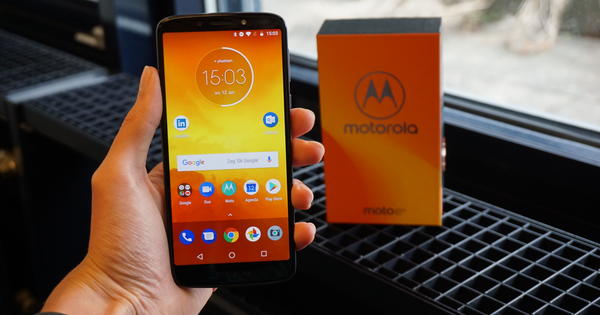The iPhone 8 (and iPhone 8 Plus) succeed the iPhone 7. So no 7S version this year. Yet it seems to be in the shadow of the upcoming iPhone X. Is that right, or is the iPhone 8 (Plus) still worth it?
iPhone 8 (Plus)
Price €809.00 (iPhone 8), €898 (iPhone 8 Plus)OS iOS 11
Screen 4.7" (1334x750p) (iPhone 8), 5.5" (1920x1080p) (iPhone 8 Plus)
Processor Apple A11 Bionic
RAM 2GB (iPhone 8), 3GB (iPhone 8 Plus)
Storage 64GB/256GB
Battery 1,821 mAh (iPhone 8), 2,691 mAh (iPhone 8 Plus)
Camera 12 megapixel dualcam (rear), 7 megapixel (front)
Connectivity 4G (LTE), Bluetooth 5.0, Wi-Fi, GPS
Format 138.4 x 67.3 x 7.3mm (iPhone 8), 158.4 x 78.1 x 7.5mm (iPhone 8 Plus)
Other Fast charge, wireless charging via Qi
To buy Kieskeurig.nl 7 Score 70
- Pros
- Wireless charging
- Fast
- Beautiful pictures
- Negatives
- Screen
- Little news
- No headphone port
- Battery life
The iPhone 8 and the 8 Plus are quite the odd one out. After all, we live in an odd year, which should mean that we will get a device with an S this year (the 7S). Apple, on the other hand, has gone for the iPhone 8, which may have to do with the fact that the design of the device has finally changed for a number of years.
Glass, glass glass
You don't have to wait for a lot of that change, the only thing that is essentially different is the fact that the back of the device is now also made of glass. According to Apple, this is the most durable glass ever used in a smartphone, but we bet that if you drop the device, there is a big crack in it. So in the past you had a 50 percent chance that it went well, now you know for sure that if the device falls on the corner, the front and back are cracked (that said, you should just not drop an iPhone). However, that glass has a very functional reason: wireless charging. It is an option that we have waited a long time for, although there were of course already covers with which you could add the functionality. It's a shame that you don't get a wireless charger with it, but you can buy them everywhere for a few tens, because (hurrah) Apple supports the Qi protocol. Wireless charging isn't really fast yet, but we're not going to complain about that, Apple has promised that a firmware upgrade will soon provide good speeds.
retina HD
The iPhone 8 Plus still uses a Retina display. We think that's outdated for a device of this price, OLED is sharper, thinner and more energy-efficient (the iPhone X does have OLED), but for now we will have to make do with LCD in this device. However, Apple promised that the display is spectacularly nicer and even renamed it the Retina HD display. Initially, we were not very impressed with the change during the hands-on, because the difference is visible in daily use of the device, but in all honesty not very interesting. The difference only really became clear when we looked at a photo we had taken on the iPhone 8 Plus, and agreed that it was nicer than the photos of the 7. Small detail: so it was a photo of the iPhone 7, but it was synced with the iPhone 8 by iCloud. Photos (and thus videos) look better on the iPhone 8, although we wonder if it's that much better that the display deserves the addition of HD.

Camera
Apple is making a comeback when it comes to smartphone photography. If you look at Apple's site (or at the presentation), you will see that the camera has been thoroughly overhauled. Apple: '12 MP camera with a larger and faster sensor, a new color filter and improved pixel technology.' That sounds nice, but it is of course a bit vague. The only question we want an answer to is: does the iPhone 8 Plus really shoot better photos? The answer is yes. There's no denying that the photos you shoot with your iPhone 8 Plus have nicer and warmer colors than those on your iPhone 7 (Plus), although it has to be said that the Retina HD display enhances that effect (on your PC the difference is for example a lot smaller). Where the camera makes a lot of difference is in low light. Of course noise remains visible in the photo, but the whole is a lot less faded, and a banana is neat yellow in the dark, instead of gray. We didn't see much difference in shot videos. Apple proudly speaks of optical image stabilization, but the iPhone 7 Plus already had that. Slow-motion in 1080 instead of 720 is of course a significant improvement, although you may wonder how many people actually use it.


Portrait Lighting
A separate point of attention that we want to highlight (ha!) is the portrait lighting. With the iPhone 7 Plus, Apple introduced portrait mode, and we're extremely excited about that. That mode would have been improved in this device, but in all honesty we see no difference (which is mainly a compliment to the iPhone 7 Plus). Portrait lighting is the next step in this mode, because you can play with the lighting. Apple emphasizes that this is not a filter, but a real-time effect (which you can also adjust afterwards). However enthusiastic we were about this function (and in particular the theater lighting) we are not very satisfied with the elaboration. Of course we're spoiled, but the power of portrait mode is that with the best will in the world you can't see that it's an artificial effect (except for very small glitches now and then). During the hands-on we tried it with standard light, but for this review we shot photos in full sun. The effect is cool, but very imperfect. Ears are cut off, dividing lines between dark and light are too hard (instead of subtle as it would be with real lighting), in short, you immediately have the idea that it has been done with Photoshop. Now it's a new part, and who knows, it might get better, but in this condition it's no reason for us to buy the iPhone 8 Plus. There is not much to report about the FaceTime camera.
We're impressed with the iPhone 8 Plus's cameras, but with the arrival of Samsung's Galaxy Note 8 and soon Google's Pixel 2, the competition is fierce. We will find out how the iPhone holds up in an upcoming camera test.

A11 Bionic chip
During the presentation, Apple was especially very enthusiastic about the A11 Bionic chip, which was specially developed for the iPhone 8 and iPhone X. According to the company, it significantly improves performance: “The four efficiency cores are up to 70 percent faster than the A10 Fusion chip. And the two performance cores are up to 25 percent faster." Nice specs, but what does that actually mean? In short, it means that the iPhone 8 is ridiculously faster than its predecessor, and even all the competing devices on the market. In the screenshot you can see that the iPhone 8 Plus in GeekBench achieves a multicore score of 10207. That in itself says nothing, but if you compare that with the 5411 of the iPhone 7 Plus, it becomes clear that the device has made a gigantic leap. Compare that with the 7101 score of the Galaxy S8 Plus (which broke records at the time) and you know that you really have a speed animal in your hands with the iPhone 8 Plus. The question, however, is: does it matter. As far as we're concerned, not at the moment. The iPhone 7 Plus runs like a charm, and even the AR apps, for which the Bionic processor should be extremely suitable, run fine on the iPhone 7 Plus. But, as said in the hands-on: this can of course change quickly if AR catches on and if developers start building heavy apps for it. That's a lot of "if" though.
Battery
Then the battery. It is, of course, impressive that Apple has managed to build in a processor that is so much more powerful, without draining the battery faster. But in all honesty, we wouldn't accept a battery that lasts even shorter than that of the iPhone 7 and 7 Plus. Admittedly, the plus series lasts much longer than the regular series, but even then it is still scant. On average, the iPhone 8 Plus should last 14 hours, but when we are on a train to Amsterdam, and we crush the candy, the device is already at 50 percent before we get there. That was the case with the iPhone 7 Plus, and the iPhone 8 Plus is no different. Admittedly, you are constantly working on your iPhone, but hey, that's why we buy a device for almost a thousand euros, isn't it? If you just call and occasionally check your mail or surf, you can manage a whole day with the device. But you continue to wonder why Apple doesn't pay more attention to battery life.



Speakers
What we are very impressed with with this device is the incredible volume that comes through the small speakers. Last year, of course, Apple already made a leap by building in not one but two speakers, and this time 25% volume has been added. That may not sound like much, but it's the difference between "I can hear that man's ringtone right here" and "My God, who turned on the air raid siren." Ideal for those moments when you just want to let someone hear a song in a busy room.
The headphone port, which was removed with the previous generation, we will of course not find on the iPhone 8. For music lovers, that leads to unnecessary hassle and it actually offers no benefits, except financial for Apple itself.
iOS 11
It is of course not a function of the iPhone 8 Plus, because the previous devices also have it, but it must be said: iOS 11 contributes a lot to a better experience. That starts with configuring, just hold the devices together, scan a code and your iPhone is configured. Most of the innovations in iOS 11 are for the iPad, but we're really really happy with the one-handed typing option, which finally allows us to type normally on the iPhone 8 Plus (or 7 or 6 Plus) without using two hands.

Conclusion
The iPhone 8 Plus is a very good smartphone. It's lightning fast, it takes fantastic photos and supports wireless charging. In that respect, we have nothing to complain about this device….except that the iPhone 7 Plus is not much inferior to it. You can easily add wireless charging with the help of a case, and then only the camera and the speed remain. We don't need that speed yet and the camera is better, but also not that much better. In short, if you have an iPhone 5 or 6, the iPhone 8 (Plus) is a nice step forward. But if you have a 6S or 7 Plus, you hardly have any reason to do that.

